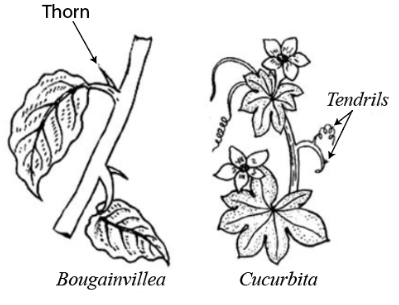
Topic Covered in the CBSE Class 12 Biology Notes Chapter 7 Overview
The topics covered in the CBSE Class 12 Biology Notes for Chapter 7, "Evolution," include: Introduction to Evolution: Understanding the concept of evolution and its significance. Theories of Evolution: Different theories of evolution, including Lamarckism, Darwinism, and Modern Synthetic Theory. Evidence of Evolution: Learning about various evidence supporting the theory of evolution, such as fossil records, comparative anatomy, embryology, and molecular biology. Mechanisms of Evolution: Understanding the processes driving evolution, including natural selection, genetic drift, gene flow, and mutations. Hardy-Weinberg Principle: Explaining the concept of genetic equilibrium and its importance in population genetics. Adaptive Radiation and Convergent Evolution: Studying the phenomena of adaptive radiation and convergent evolution and their role in species diversification. Human Evolution: The evolutionary history of humans, including the fossil evidence and the theories regarding human origins. Origin of Life: Investigating hypotheses about the origin of life on Earth and the conditions necessary for life to emerge.CBSE Class 12 Biology Chapter-Wise Weightage 2023-24
CBSE Class 12 Biology Notes Chapter 7 PDF
You can access the CBSE Class 12 Biology Notes for Chapter 7, "Evolution," in PDF format through the provided link. These notes cover all the important topics and concepts discussed in the chapter, making it easier for students to revise and understand the material. Whether you're preparing for exams or simply want to enhance your understanding of evolution, these notes serve as a valuable resource.CBSE Class 12 Biology Notes Chapter 7 PDF
CBSE Class 12 Biology Notes Chapter 7 Evolution
Here are the detailed notes of Class 12 Biology Chapter 7 Evolution:What Is Evolution?
Evolution refers to the examination of various life forms, their traits, and the alterations observed over numerous generations. It serves as the scientific principle employed by biologists to analyze genetic diversity within a population. Numerous theories exist concerning the origin of life on Earth. The theory of evolution postulates that all species are interconnected and undergo gradual changes over time.Darwin’s Theory of Evolution
Darwin's Theory of Evolution, formulated by the renowned naturalist Charles Darwin, revolutionized our understanding of the natural world. Darwin proposed that all species of life have descended over time from common ancestors through a process he termed "natural selection." Key principles of Darwin's Theory of Evolution include:- Variation: Individuals within a population exhibit differences in traits, such as size, color, or behavior.
- Inheritance: Some of these variations are heritable and can be passed down from parents to offspring.
- Overproduction: Organisms produce more offspring than can survive, leading to competition for resources.
- Differential Survival: Individuals with advantageous traits are more likely to survive and reproduce, passing on their traits to future generations.
- Adaptation: Over time, favorable traits become more common in a population, as they are selected for by the environment.
A Brief Account of Evolution
Evolution is the process by which living organisms have changed over time, leading to the vast diversity of life we see on Earth today. Here's a concise overview of the key stages in the evolutionary history of life: Origin of Life: The first cellular forms of life appeared on Earth approximately 3.5 to 4 billion years ago. These simple single-celled organisms eventually gave rise to more complex life forms through processes such as natural selection and genetic mutation. Evolution of Multicellular Organisms: Over time, single-celled organisms evolved into multicellular forms, leading to the emergence of complex life forms such as plants, animals, and fungi. Invasion of Land: Around 500 million years ago, some aquatic organisms began to colonize land, leading to the evolution of terrestrial plants and animals. This transition from water to land was a crucial milestone in the history of life on Earth. Age of Reptiles: During the Mesozoic Era (approximately 252 to 66 million years ago), reptiles dominated the Earth, including dinosaurs, pterosaurs, and marine reptiles. This era witnessed significant diversification and adaptation among reptilian species. Rise of Mammals: Following the extinction of dinosaurs at the end of the Mesozoic Era, mammals began to diversify and thrive. Mammals evolved various adaptations that allowed them to occupy diverse ecological niches, leading to the emergence of modern mammalian diversity. Evolution of Primates: Approximately 65 million years ago, primates diverged from other mammalian lineages. Over time, primates evolved into various forms, including monkeys, apes, and eventually, humans. Emergence of Homo Sapiens: The genus Homo, which includes modern humans (Homo sapiens), emerged around 2-3 million years ago in Africa. Over time, Homo sapiens evolved unique characteristics, such as large brains and complex social behaviors, enabling them to spread across the globe and become the dominant species on Earth. Related Links -| CBSE Class 12 Biology Notes Chapter 2 |
| CBSE Class 12 Biology Notes Chapter 5 |
| CBSE Class 12 Biology Notes Chapter 7 |
| CBSE Class 12 Biology Notes Chapter 9 |
| CBSE Class 12 Biology Notes Chapter 3 |
Evidence for Evolution
The theory of evolution is supported by a wide range of evidence from various scientific disciplines. Here are some key pieces of evidence that support the idea of evolution: Fossil Record: The fossil record provides direct evidence of how life has changed over time. Fossils are the preserved remains or traces of ancient organisms, and they show a progression of life forms from simple to complex over millions of years. Transitional fossils, such as Archaeopteryx (a transitional form between dinosaurs and birds), provide evidence of evolutionary relationships between different groups of organisms. Comparative Anatomy: Comparative anatomy involves comparing the anatomical structures of different organisms to identify similarities and differences. Homologous structures, which have similar underlying anatomical features but may serve different functions, suggest common ancestry. For example, the pentadactyl limb structure found in mammals, birds, reptiles, and amphibians suggests a common evolutionary origin. Embryology: Embryology, the study of the development of embryos, provides evidence of evolutionary relationships between organisms. Similarities in the early stages of embryonic development across different species indicate common ancestry. For example, vertebrate embryos exhibit similar structures, such as pharyngeal pouches and tails, during early development, suggesting shared evolutionary history. Molecular Biology: Molecular biology techniques, such as DNA sequencing and comparative genomics, allow scientists to compare the genetic material of different organisms. Similarities in DNA sequences and gene sequences among organisms reflect common ancestry. Molecular phylogenetics, which reconstructs evolutionary relationships based on genetic data, supports the evolutionary relationships proposed by other lines of evidence.Modes of Evolution
The Big Bang Theory :- Initially, there was a massive explosion from a tiny, dense point called a singularity.
- This explosion led to the universe expanding and cooling down.
- Over time, basic elements like hydrogen and helium formed.
- Gravity pulled these gases together to form galaxies, including our Milky Way where Earth formed about 4.5 billion years ago.
- Earth formed about 4.5 billion years ago without an atmosphere.
- The surface had water vapor, methane, carbon dioxide, and ammonia.
- UV radiation from the sun caused water vapor to decompose into hydrogen and oxygen.
- As the Earth cooled, water vapor condensed and formed oceans.
- Life appeared around 500 million years after Earth formed.
- Some ancient beliefs suggested life came from spores transported to Earth.
- The spontaneous generation theory suggested life arose from decaying matter until Louis Pasteur's experiment debunked it.
- Proposed life evolved from non-living organic molecules like RNA and proteins.
- S.L. Miller's lab experiment in 1953 simulated early Earth conditions, producing amino acids.
- Miller's experiment showed amino acids forming from inorganic compounds.
- Other scientists replicated similar results.
- Meteorite samples contained similar chemicals, suggesting universal processes.
- Charles Darwin observed life forms sharing similarities and extinct species.
- Survival of the fittest: Stronger creatures adapt and survive, passing on traits.
- Alfred Wallace had similar conclusions.
- Geological and biological histories are linked.
- Fossils show life forms changed over time, with specific forms limited to certain periods.
- Similarities and differences in living things today and in the past suggest common ancestry.
- Divergent evolution: Different species share similar structures adapted to different needs.
- Convergent evolution: Unrelated species evolve similar traits for similar functions.
 Biochemical Evidence
:
Biochemical Evidence
:
- Proteins and genes among animals show common ancestry.
- Similar traits in embryonic stages among vertebrates suggest common ancestry.
 Evolution by Anthropogenic Action
:
Evolution by Anthropogenic Action
:
- Overuse of herbicides, pesticides, etc., leads to the selection of resistant varieties in shorter time scales.
- Similarly, microorganisms develop resistance to antibiotics or drugs.
What is Adaptive Radiation?
Adaptive radiation refers to the process by which a single ancestral species diversifies into a variety of different forms, each adapted to exploit specific ecological niches or environments. This phenomenon typically occurs when a species colonizes a new habitat with diverse ecological opportunities and undergoes rapid evolutionary changes to adapt to different ecological roles. During adaptive radiation, ancestral species undergo significant genetic and phenotypic changes, leading to the emergence of multiple descendant species, each with distinct traits suited to specific environmental conditions. These descendant species often occupy different niches within the ecosystem, allowing them to coexist without directly competing with one another. Adaptive radiation is often associated with the evolution of diverse species in isolated geographic regions or following significant environmental changes. It can result in the evolution of a wide range of morphological, physiological, and behavioral adaptations, leading to the formation of new species with unique characteristics.Important Questions of CBSE Class 12 Biology Notes Chapter 7
1. Write a brief account of Evolution. 2. List out the 5 mechanisms of evolution. 3. What is Charles Darwin’s theory of evolution? 4. What is adaptive radiation? Explain with examples.CBSE Class 12 Biology Notes Chapter 7 FAQs
What is evolution?
Evolution is the process by which different forms of life develop and change over successive generations through genetic variation, natural selection, and other mechanisms.
Who proposed the theory of evolution?
The theory of evolution was proposed by Charles Darwin, an English naturalist, in the 19th century. He outlined his ideas in his seminal work "On the Origin of Species" published in 1859.
What is natural selection?
Natural selection is the process by which organisms that are better adapted to their environment tend to survive and reproduce more successfully than those that are less adapted. This leads to the gradual change of populations over time.
What is the Hardy-Weinberg principle?
The Hardy-Weinberg principle is a mathematical model that describes the equilibrium of allele frequencies in a population under certain conditions. It states that allele frequencies will remain constant from generation to generation if certain conditions are met, including no mutation, no gene flow, random mating, large population size, and no natural selection.
How does convergent evolution differ from divergent evolution?
Convergent evolution occurs when different species independently evolve similar traits or adaptations due to similar selective pressures, even though they may not be closely related. Divergent evolution, on the other hand, occurs when closely related species evolve different traits or adaptations due to different selective pressures in their respective environments.
Talk to a counsellorHave doubts? Our support team will be happy to assist you!

Check out these Related Articles
Free Learning Resources
PW Books
Notes (Class 10-12)
PW Study Materials
Notes (Class 6-9)
Ncert Solutions
Govt Exams
Class 6th to 12th Online Courses
Govt Job Exams Courses
UPSC Coaching
Defence Exam Coaching
Gate Exam Coaching
Other Exams
Know about Physics Wallah
Physics Wallah is an Indian edtech platform that provides accessible & comprehensive learning experiences to students from Class 6th to postgraduate level. We also provide extensive NCERT solutions, sample paper, NEET, JEE Mains, BITSAT previous year papers & more such resources to students. Physics Wallah also caters to over 3.5 million registered students and over 78 lakh+ Youtube subscribers with 4.8 rating on its app.
We Stand Out because
We provide students with intensive courses with India’s qualified & experienced faculties & mentors. PW strives to make the learning experience comprehensive and accessible for students of all sections of society. We believe in empowering every single student who couldn't dream of a good career in engineering and medical field earlier.
Our Key Focus Areas
Physics Wallah's main focus is to make the learning experience as economical as possible for all students. With our affordable courses like Lakshya, Udaan and Arjuna and many others, we have been able to provide a platform for lakhs of aspirants. From providing Chemistry, Maths, Physics formula to giving e-books of eminent authors like RD Sharma, RS Aggarwal and Lakhmir Singh, PW focuses on every single student's need for preparation.
What Makes Us Different
Physics Wallah strives to develop a comprehensive pedagogical structure for students, where they get a state-of-the-art learning experience with study material and resources. Apart from catering students preparing for JEE Mains and NEET, PW also provides study material for each state board like Uttar Pradesh, Bihar, and others
Copyright © 2025 Physicswallah Limited All rights reserved.
Get App









